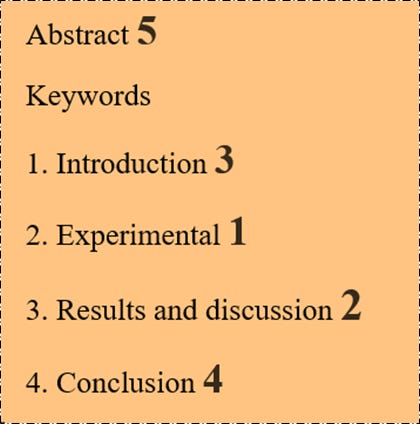Begin with the Experimental section. Have all the required information ready: either in a pdf or the webpage of the characterization facility from which you received the received the data for your samples.
Then, move on to the Results and Discussion section. Include Figure or Table numbers. Specify the results of the particular characterization. Discuss or interpret the results by correlating with previous literature. Cite relevant literature to justify your arguments.
Next, write the Introduction section.
Introduce the broad theme: Give a general overview, list out the applications, cite previous literature which cover the broad theme
Then, introduce the sub-theme, include relevant applications with appropriate citations
Include studies related to the present study/literature review. SPECIFY THE RESEARCH GAP at this point. Your “why” is most important than your “how.”
At last, specify the aim of the study followed by the characterizations conducted for the sample or specimen.
Followed by the Conclusion section. This section gives the results of the study. Do not introduce any new results or new arguments. Do not include any citations.
Finally, write the Abstract. The abstract is the key to your manuscript but it should be written at the end. The abstract presents the contents of the study with significant results.
Happy writing! Meet you in the next post!





Very much useful for the researcher who is starting to write their manuscript for publishing in high impact journals. Thank you for valuble information.
Mind blowing, elaborate more on each step.